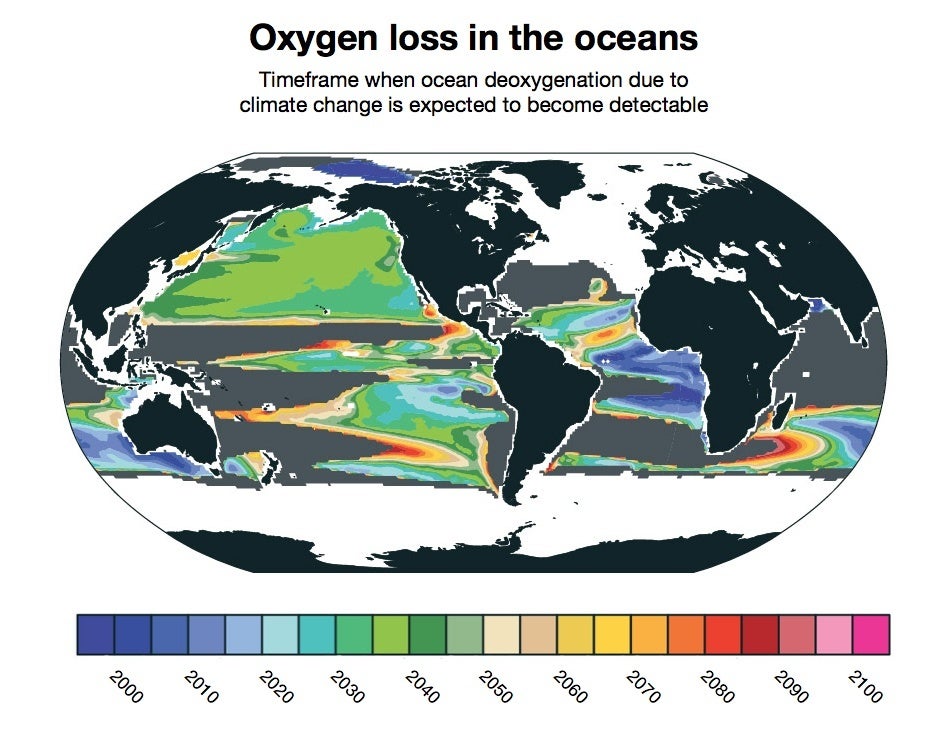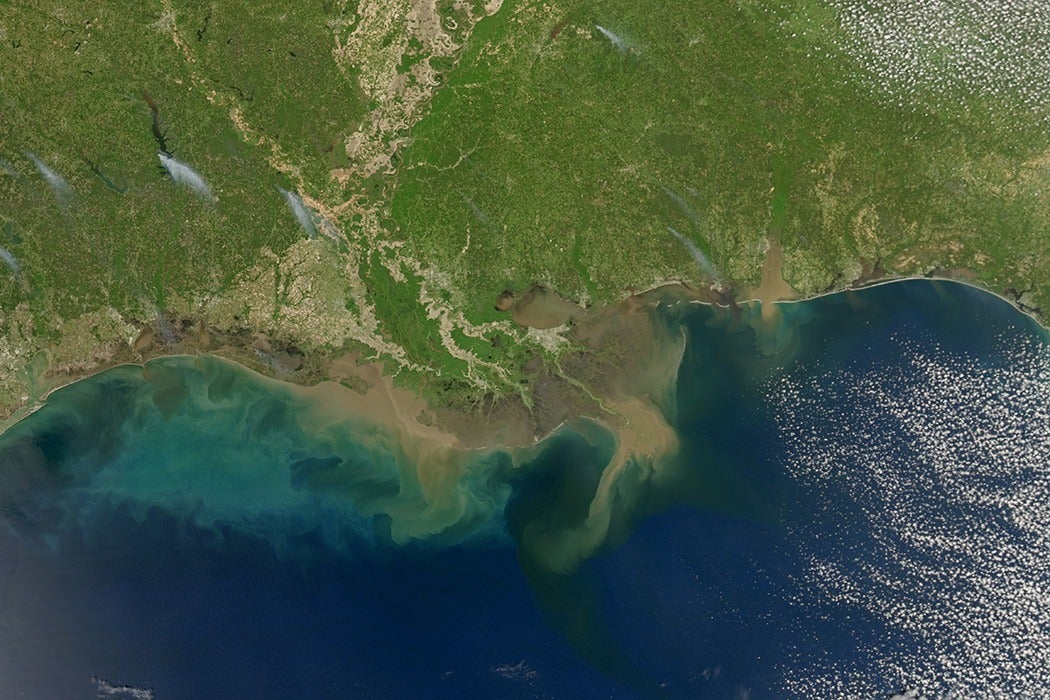The oceans can’t catch a break. To rising temperatures and acidification caused by rising CO2 emissions, add oxygen deprivation that might render large areas of the Pacific Ocean uninhabitable to most marine life. Oxygen deprivation resulting from climate change has historically received less attention than either rising temperatures or acidification, but in some areas it might be a more serious problem.
Large areas of the ocean already exist in reduced-oxygen condition. Some of these areas are man-made, e.g. the Gulf of Mexico dead zone. Many of these low oxygen areas, however, are natural. Surface waters have a direct connection to the atmosphere and are well oxygenated. These waters sink to the ocean floor in areas of downwelling, providing oxygen to the deep ocean. However, the midwater, areas a few hundred meters down, are prone to oxygen deprivation. These areas have no surface access, and sinking oxygenated waters simply pass through on their way down. Furthermore, organic waste produced through photosynthesis sinks down through the midwater, decaying as it goes. The process of decomposition uses up a lot of oxygen. In areas where productivity from photosynthesis is high—for example, off the Pacific coast of the Americas—large amounts of organic waste are decaying, resulting in large areas with reduced oxygen or even zero oxygen.

Oxygen does not dissolve as well in warmer water, so as water temperatures increase, a fair amount of oxygen that would normally be dissolved in the ocean will return to the atmosphere. However, the greatest dissolved oxygen losses will result from increased primary productivity. In warmer temperatures, photosynthesis increases (up to a point), in turn increasing the amount of organic material sinking through the water column and decaying, using up even more oxygen. A chemical reaction resulting from acidification can further accelerate this process. The combined result may be to grow and intensify the low oxygen areas, until large areas of the ocean will be off-limits to most life.
The good news is that these areas are not completely lifeless. Many types of bacteria thrive without oxygen, and these form the basis of the food web in the oxygen-depleted areas. Other organisms, such as certain crustaceans, have evolved highly efficient oxygen extraction mechanisms and can survive in these inhospitable places. However, most larger creatures, such as commercially viable fish, tend to avoid these areas. The other good news, sort of, is that sediment and fossil evidence shows that low-oxygen areas have expanded and contracted in the past, with no long-term harm to the ocean system. Though it’s unlikely, if carbon dioxide emissions can be reduced in time, oxygen deprivation may not be a permanent problem. Unfortunately, conditions are likely to get worse before they get better.







